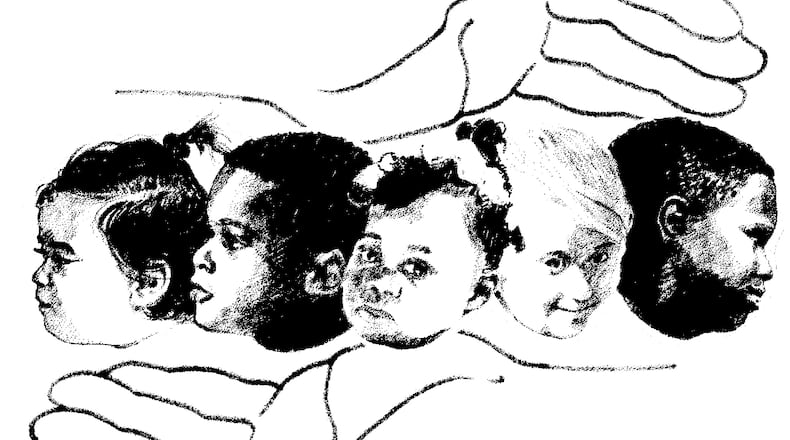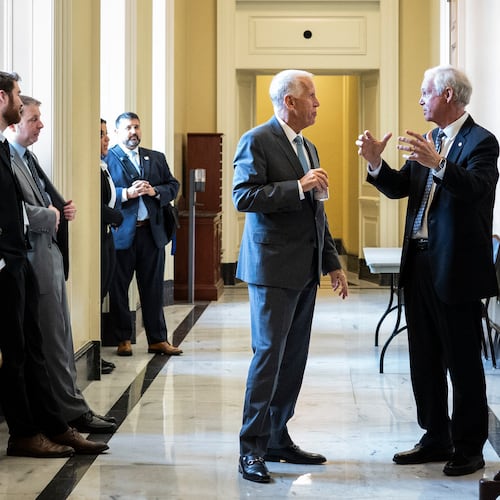Mark A. Elgart is the founding president and chief executive officer for Alpharetta-based AdvancED, which focuses on education improvement through research and innovation, policy and advocacy, technology and accreditation. The parent company of the Southern Association of Colleges and Schools, AdvancED accredits schools in Georgia and nationwide.
In this column, Elgart discusses the "what now" of the Opportunity School District defeat this week.
By Mark A. Elgart
Now that Georgia voters have rejected a constitutional amendment that would have allowed a state takeover of the lowest-performing schools, we need to think about new ways to address the challenges faced by these schools and the students who attend them.
While the Opportunity School District would have changed the structure of how low-performing schools are managed, the reality is that the biggest factor for minority and low-income students is not how their schools are run. It is the zip code they are in.
An analysis of school data in 10 states, including Georgia, found that of the 832 schools identified as “low-performing,” more than 9 in 10—92.3 percent—are schools in which half the students live in poverty. Three quarters (74 percent) are the schools where students face the most extreme poverty.
AdvancED is in the business of school improvement. Based on our work with more than 34,000 institutions and 20 million students worldwide, we know that the root problem with low-performing schools is not simply about how they are managed and operated. It is that we do not systematically respond to the impact of poverty on a child’s readiness to learn or accelerate progress for low-income students who are behind their peers.
Our schools, and our entire system of education, are not set up to provide instruction that meets the individualized needs of every student. Nor are schools prepared to meet the social and emotional needs of students facing so many challenges outside of the classroom. Schools must regularly monitor their students’ progress to ensure that they are meeting these needs in the classroom and making efforts to improve when they do not. This is just the beginning.
To change low-performing schools across Georgia, we need to have the state and districts do a better job of addressing how resources are allocated. Today, at best, school funding provides roughly equal resources to address vastly unequal needs. More equitable public funding on its own will not solve the problem. No school—or governmental entity—has the resources to singlehandedly address all the challenges that poverty brings to the equation of helping young people learn.
This is not about just investing more money, but also reallocating existing public resources from the state and counties to coordinate services to schools, students, and families—services like counseling, housing and healthcare, and job training for parents. Cultural agencies—museums, science centers, and libraries—that provide environments where students can learn and be engaged also have a significant role to play. Companies, which can provide mentoring, need to get involved; they can provide a vision for future careers that makes school more relevant to students living in poverty.
We need to bring together a much broader group of stakeholders—public and private—to find ways to support teaching and learning in high-poverty schools. Poverty is often concentrated in neighborhoods, and it’s the people, companies, and community groups in those neighborhoods that know those challenges best. Instead of creating another distant layer of oversight, we need to coordinate the resources of schools, businesses, community groups, human services organizations, parents, and the public together in ways that address the needs of each low-performing school—and improve the lives of the poor and minority students who attend them.
One possible way forward is to create—in our highest poverty areas—community coalitions of local businesses, community and education organizations, as well as foundations—that can coordinate these collective efforts in new ways. In many cities, local education foundations have marshaled resources beyond what schools are able to provide and drive meaningful change that’s rooted in the needs of their communities.
School reformers on all sides of the spectrum agree that students’ futures shouldn’t be determined by their zip code. Gov. Nathan Deal is correct that the lowest-performing schools have trapped poor and minority students in failing schools and helped perpetuate the cycle of poverty. This is our greatest challenge in education and in our economically disadvantaged communities. It is imperative that we discover and commit to new ways to bring all of our communities’ efforts together to address how to educate students living in poverty.
About the Author
Keep Reading
The Latest
Featured




